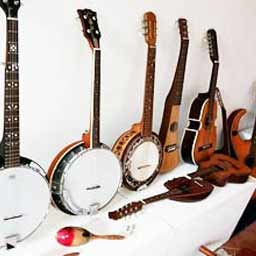Castle of Counts of Modica in Alcamo

Simonabm - CC4.0
GPS: 37.979782053022,12.966657089496
Piazza della Repubblica - Alcamo (TP) WebsiteThe Castle of the Counts of Modica in Alcamo represented for centuries the seat of political and administrative power of the historic county of Modica.
impregnable fortress and prestigious residence of Enrico and Federico Chiaramonte who probably built it between 1340 and 1350, the castle takes its name from the Counts who owned it from 1410 to 1812. The castle has protected the city and resisted violent attacks for centuries, including the notorious one of an Islamic pirate, il corsaro Barbarossa.
With its sturdy bulk it stands on a rocky promontory that is difficult to attack, with two sides out of three consisting of overhanging walls. The structure is set on a rhomboid plan, and with four alternating towers, two cylindrical and two square. On the north façade two original single-light windows resist the time and in the internal courtyard with mullioned windows and three-light windows. The main staircase of the castle is in red marble from the quarries of Monte Bonifato.
In the inner courtyard you can visit the medieval, civil and "criminal" prisons , a series of rooms square carved from the rock , each reserved for a specific category of prisoners: women, common condemned men, gentlemen, people awaiting trial. For the most dangerous brigands there were two large pits about seven meters deep, one of which is still visible today, closed at the top by a mighty iron grate, from which light and air entered. In the same courtyard there is the more recent church of the Madonna del Medagliere , built in 1930 on the ruins of the church of San Leonardo, built to comfort the prisoners. It is also visible what remains of the church of San Cataldo , the private chapel of the Count and the Governor, and finally three bell niches now walled up outside. Almost nothing remains of the 5 towers, the 4 doors and the walls of the ancient manor.
The military patrol passage has recently come to light and made usable: a suggestive underground tunnel dug in the rock that pierces the rocky spur on which the castle stands.


